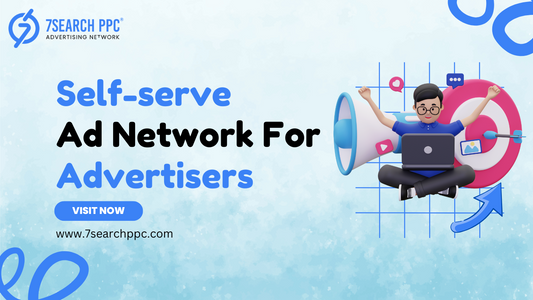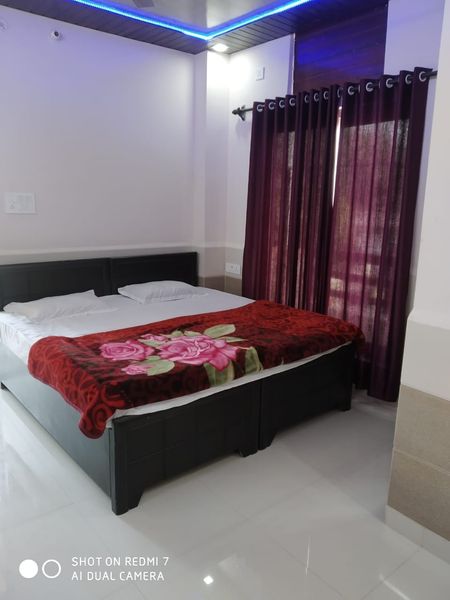The Complete Guide to Self-Serve Advertising Platforms
 Manish Sharma
25 Mar, 2025
15 mins read
62
Manish Sharma
25 Mar, 2025
15 mins read
62

Introduction
In today's digital marketing landscape, businesses of all sizes are looking for efficient and cost-effective ways to reach their target audiences. Self-Service Advertising platforms have emerged as a powerful solution, allowing advertisers to create, manage, and optimize ad campaigns without needing an intermediary.
These platforms provide access to various ad formats, including Native Ads, Text Ads, Popunder Ads, Banner Ads, and Push Notification Ads, making them a versatile choice for marketers. Whether you're a small business owner or a large enterprise, leveraging a Self-Service Ad Network Management Platform can help you maximize ROI while maintaining full control over your campaigns.
In this comprehensive guide, we’ll explore:
- What a Self-Serve Advertising Platform is and how it works
- The different types of ad formats available
- Benefits of using a Self-Service Ad Network
- How to choose the right platform for your needs
- Best practices for running successful ad campaigns
What Is a Self-Serve Advertising Platform?
A Self-Serve Advertising Platform is an online tool that allows advertisers to independently create, launch, and manage digital ad campaigns. Unlike traditional ad networks that require direct communication with sales teams, self-service platforms empower users with full control over their ad spend, targeting, and optimization.
How Does It Work?
- Sign Up & Deposit Funds – Advertisers register on the platform and add funds to their account.
- Create Campaigns – Users set up campaigns by selecting ad formats (Banner Ads, Push Ads, Native Ads, etc.), defining budgets, and choosing targeting options.
- Launch & Optimize – Once live, advertisers monitor performance and adjust bids, creatives, or targeting to improve results.
- Track Performance – Real-time analytics help measure ROI and refine strategies.
Popular Ad Formats in Self-Serve Advertising
1. Native Ads
Native ads blend seamlessly with website content, offering a non-intrusive user experience. They typically appear as sponsored articles or recommended content and often generate higher engagement.
2. Text Ads
Simple yet effective, text ads consist of a headline, description, and a link. They are commonly used in search engine marketing (SEM) and display networks.
3. Banner Ads
One of the oldest digital ad formats, banner ads appear as static or animated images on websites. They come in various sizes (e.g., 728x90, 300x250) and are ideal for brand awareness.
4. Popunder Ads
These ads open in a new browser window behind the current one, ensuring visibility without immediate disruption. They are effective for direct response campaigns.
5. Push Ads
A Push Ad Network delivers short, clickable messages directly to users' devices. Push Ads are highly engaging and boast high opt-in rates.
6. Popup Ad Network
Popup ads appear in a new window when a user visits a website. While sometimes considered intrusive, they can be effective when used strategically.
Benefits of Using a Self-Service Ad Network
1. Full Control Over Campaigns
Advertisers can adjust bids, budgets, and creatives in real time without relying on a middleman.
2. Cost-Effective
Eliminating agency fees and sales commissions reduces overall ad spend, making it ideal for small businesses.
3. Real-Time Analytics
Most platforms provide detailed performance reports, helping advertisers optimize campaigns on the fly.
4. Flexible Ad Formats
From Push Notification Ads to Native Ads, self-serve platforms offer multiple formats to suit different marketing goals.
5. Advanced Targeting Options
Advertisers can target users based on demographics, interests, behavior, and even retarget previous visitors.
How to Choose the Right Self-Serve Advertising Platform
When selecting a Self-Service Ad Network Management Platform, consider the following factors:
1. Supported Ad Formats
Ensure the platform offers the ad types you need (Push Ads, Banner Ads, Popunder Ads, etc.).
2. Pricing Model
Look for transparent pricing—CPC (Cost-Per-Click), CPM (Cost-Per-Mille), or CPA (Cost-Per-Action).
3. Targeting Capabilities
Advanced targeting (geo, device, audience segmentation) improves campaign effectiveness.
4. User Interface & Ease of Use
A well-designed dashboard simplifies campaign management.
5. Publishers & Inventory Quality
High-quality publishers ensure better visibility and engagement.
6. Customer Support
Even in a self-serve model, reliable support is crucial for troubleshooting.
Best Practices for Running Successful Self-Serve Ad Campaigns
1. Define Clear Goals
Are you driving traffic, generating leads, or increasing sales? Align your strategy with business objectives.
2. A/B Test Creatives
Experiment with different ad copies, images, and CTAs to determine what resonates best.
3. Optimize Landing Pages
Ensure your landing page matches the ad’s promise for higher conversion rates.
4. Monitor & Adjust Bids
Use real-time data to tweak bids for better ROI.
5. Leverage Retargeting
Re-engage users who previously interacted with your ads.
6. Stay Updated on Trends
New ad formats (like Push Notification Ad Networks) emerge frequently—stay ahead of the curve.
Conclusion
A Self-Serve Advertising Platform provides businesses with the flexibility, control, and scalability needed to run effective digital ad campaigns. With diverse ad formats like Native Ads, Push Ads, and Popunder Ads, advertisers can tailor their strategies to meet specific marketing goals.
By choosing the right Ad Network Management Platform and following best practices, businesses can maximize their ad spend and achieve measurable results. Whether you're new to digital advertising or a seasoned marketer, self-serve platforms offer a powerful way to reach your audience efficiently.
Frequently Asked Questions (FAQs)
What is a self-serve advertising platform?
Ans. A self-serve advertising platform is a digital tool that allows advertisers to independently create, manage, and optimize ad campaigns without needing a sales representative. These platforms support various ad formats like Native Ads, Banner Ads, and Push Notification Ads.
How does a self-service ad network differ from traditional ad networks?
Ans. Traditional ad networks often require direct contact with sales teams and manual campaign setups. In contrast, self-service ad networks provide automated tools for advertisers to launch and adjust campaigns in real-time with full control over budgets and targeting.
Which ad formats perform best in self-serve platforms?
Ans. Performance depends on campaign goals:
- Push Notification Ads work well for engagement and conversions.
- Native Ads blend naturally with content, improving CTR.
- Popunder Ads are effective for direct response marketing.
Are self-serve advertising platforms suitable for small businesses?
Ans. Yes! These platforms are budget-friendly, allowing small businesses to run targeted campaigns without high agency fees. They also offer scalable pricing models like CPC and CPM.
Can I run retargeting campaigns on self-serve platforms?
Ans. Yes, most platforms offer retargeting options to re-engage users who visited your website but didn’t convert.
How do I track ROI on self-serve ad campaigns?
Ans. Use built-in analytics dashboards to monitor metrics like:
- Click-through rates (CTR)
- Conversion rates
- Cost per acquisition (CPA)
Are popup and popunder ads effective?
Ans. When used strategically, they can drive conversions. However, excessive use may harm user experience—balance them with less intrusive formats like Native Ads or Push Ads.
Which self-serve platform is best for beginners?
Look for platforms with:
- Intuitive interfaces
- Strong customer support
- Transparent pricing (e.g., PropellerAds, MGID, Adsterra)
Written By:
Manish Sharma



Hotels at your convenience
Now choose your stay according to your preference. From finding a place for your dream destination or a mere weekend getaway to business accommodations or brief stay, we have got you covered. Explore hotels as per your mood.


